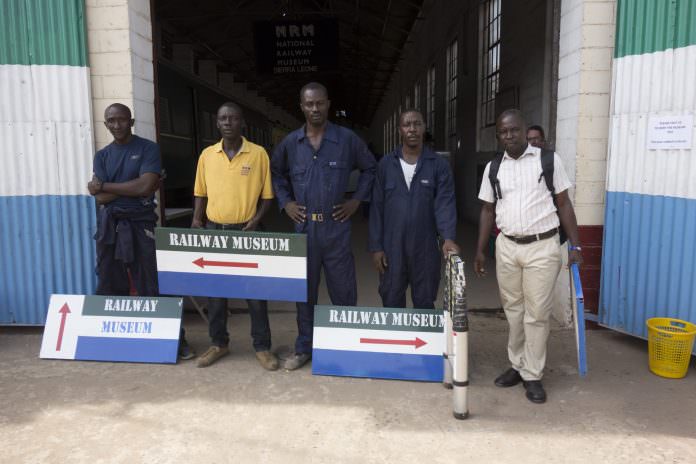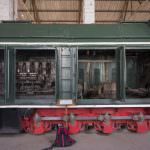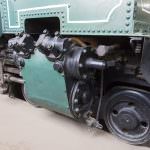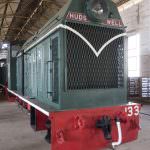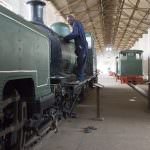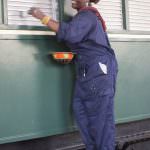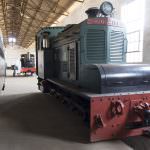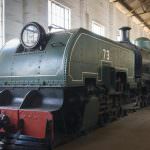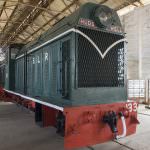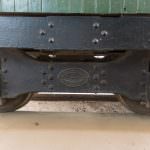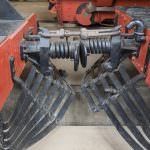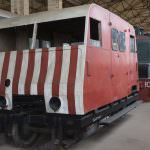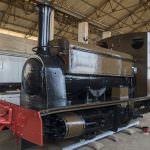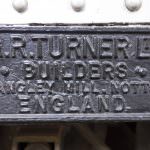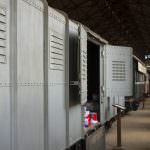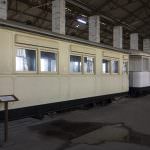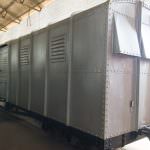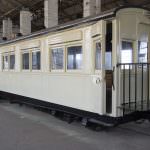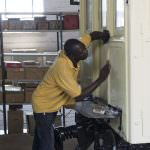Nations have long looked to evolve and innovate their railways as a way of maximising economic potential.
Few – if any – have looked to the past, to old technology and systems, to pin a nation’s hopes and dreams on, but Sierra Leone is not your typical country.
Devastated by more than a decade of civil war and the Ebola virus epidemic, the government of Sierra Leone has placed a group of 14 non-functioning locomotives and carriages at the front of its strategy to become a middle-income country by 2035.
There are no public railways in the country – a 50 mile private line connecting iron mines to the nation’s ports is all that remains – but the British-built engines, which were saved from the scrap heap when the Government Railway was ripped up in 1974, now sit proudly in the Sierra Leone National Railway Museum.
Established in 2005 by the then-President Ahmad Tejan Kabbah, the museum – complete with a gift shop, full-time staff and a Trip Advisor page – stands as a reminder of the nation’s heritage, as a source of learning, and as an attraction to boost Sierra Leone’s tourism trade.

The grand tour
Back in Britain, the Friends of Sierra Leone Railway Museum, in collaboration with the Welshpool and Llanfair Light Railway (WLLR), have embarked on a summer- long campaign to increase the profile of the African country and the museum to holidaymakers looking for a destination with a difference.
A former Sierra Leonean tank locomotive that was bought and saved from being scrapped by WLLR in 1975 – the heritage line having the same gauge as Sierra Leone’s – will take in a number of high-profile destinations on a tour of Britain.
The No. 85 locomotive is travelling on a low loader because its original 1954 boiler is in need of repair and will be accompanied by museum exhibitions and staffed by volunteers from the WLLR and Friends of Sierra Leone Railway Museum.
Follow Global Rail News on Facebook to receive updates throughout the day
Leaving the National Railway Museum in Shildon, Durham, the engine visited the Leeds Industrial Museum, near to where it was built by the Hunslet Engine Company; the Streetlife Museum of Transport in Hull, a city twinned with the Sierra Leonean capital Freetown; the London Museum of Water & Steam, as part of an exhibition on the African Railway Adventure; and the Tyseley Locomotive Works in Birmingham as part of its 50th anniversary open weekend.
The final steps are to be confirmed but are expected to include a stop a Shrewsbury Steam Rally, the Ironbridge Gorge Museum in Shropshire and a ‘big profile’ event that the Friends of Sierra Leone Railway are currently keeping firmly under wraps, before the locomotive returns to the Welshpool & Llanfair Light Railway, in Wales.
The tour will tell the story of slavery and freedom, strengthen the links between Sierra Leone and Britain and broaden the public’s perception of the African country beyond civil war and Ebola.
It will also launch WLLR’s £600,000 fundraising campaign – backed by a £22,800 grant from the Heritage Lottery Fund – to create a new workshop and launch ‘The African Train’ on its network by refurbishing the No. 85 locomotive and two Gloucester-built Sierra Leone Railway carriages, which the railway also purchased in 1975.
Once operational, this train will serve as a reminder of Sierra Leone’s railway history and further promote the country’s railway museum.

Hope
Life in Sierra Leone couldn’t be further away from that in Britain.
Generations of locals are growing up without having experienced train travel, some have perhaps never seen one and – with life expectancy at 50, according to the World Health Organisation – few will have survived who remember the look, smell and sound of a steam or diesel locomotive.
But one thing Sierra Leoneans do have is bags of hope.
‘What is great about the people of Sierra Leone is that they have very little but they are the most optimistic people,’ says Helen Ashby, chair of the Friends of Sierra Leone Museum, who adds that many museum visitors ask what they could do to see the railway return.
‘They pick themselves up and dust themselves down to make things better. We could learn a lot from them.’
Helen has visited Sierra Leone half a dozen times as part of the wider project which has an incredible vision to transform the poverty-stricken country by making use of its old railway assets.
Talking about the Welshpool Railway’s project, she adds, ‘For the Friends of Sierra Leone Railway Museum, it is about getting people to understand where Sierra Leone is. Civil war and Ebola are two of the reasons people have heard about it but it is a commonwealth country and it is a beautiful country, people should go and have a look.’

A new legacy
Fast approaching the 50th anniversary since the Sierra Leone railway was torn up, the cluster of old British locomotives remain as iron reminders of Britain’s legacy.
Putting the events of recent years behind them, it is hoped the trains can carry the country forward in ways it never has before and help Sierra Leone establish a new legacy.
More pictures from the Sierra Leone Railway Museum (Credit: William Bickers-Jones):
Read more: Kenya’s rail freight service closer to launch with delivery of 78 rail vehicles

